by Tom Watson
U2, Sammy Hagar, the Go-Go’s, Steve Lukather, John 5, Dave Navarro, Brian Setzer, Dishwalla, John Lee Hooker – these are just a few of the names that have stood in front of the lens of Los Angeles-based photographer Maryanne Bilham. Born in New Zealand, Bilham studied photography at the University of Fine Arts in Auckland, was involved with the start of the magazine, Paper (a publication offering the photography and graphic arts communities an opportunity to present one-of-a-kind visualizations to their clients), lived and worked in southeast Asia for nine years, has had her work exhibited throughout the United States, and, in 2003, was awarded second place in the International Photography Awards, underwater section, for her image, Christina the Astonishing.
There’s an old joke about how to make a million dollars in photography – invest two million. It’s a tough business in which only the truly talented survive. Sure, anyone can take a picture, but very few can take a good one.
Good photography is the result of a marriage between art and science and does more than simply represent the subject or present information. A good image is a beginning and not an end. It hints, and sometimes shouts, at thoughts and feelings beyond what’s seen by our eyes.
The work of Maryanne Bilham is good photography. Whether it’s advertising, portraiture, live concert, or fine art, her work points to something beyond itself and breathes new life into the old phrase: Seeing is believing.
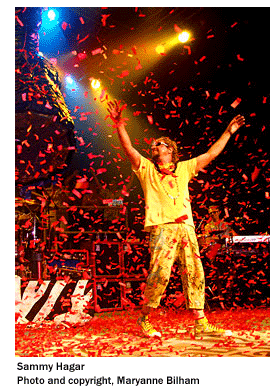
New Zealand…Hong Kong…Los Angeles…why and when? How did you get your professional foot in the door in L.A.?
Maryanne Bilham: Born in Auckland, New Zealand. Interests early on included dance, super 8mm films and surf photography. Growing up in an environment like New Zealand, naturally the outdoors played a large role and the coastline of Auckland has many dramatic beach environments.
After my school years I spent a couple of years working in the fashion industry. At this stage I was experimenting with film and stills. Decided to pursue an apprenticeship in one of these areas and an opening came up with one of Auckland’s leading photographers. Here began my career in the early ’80s. During this period of work for the advertising industry we also published a magazine, PAPER, which was published quarterly in A3 size presenting a unique venue for designers and photographers to create one-of-a-kind poster-style imagery for their advertising clients.
In 1983, my musician/composer boyfriend decided to move to Hong Kong, which had a more active film and advertising market. I visited for a month over the Chinese New Year and immediately fell in love with the dynamic energy of this bustling Asian city. I secured a job with the top advertising photographer at that time, Kevin Orpin, an Australian, and found my way into the industry there under the umbrella of his business.
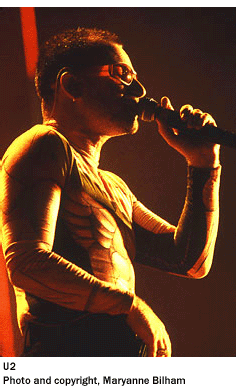
In 1986, I opened my own studio and for the next six years worked on campaigns for ad agencies, magazine editorial, and imagery for the Hong Kong performing arts community and fringe club-performance artists, and shot most of the international music community resident in HK in this era.
This work also took me into China on several occasions: Once to Shanghai where I stayed at the music conservatory in the French Quarter for a few weeks and photographed a Peking opera troupe who were one of the first to tour Europe. On another occasion I went to Quangzhou in the Fujian province to shoot a music festival (the town was originally on the ancient trade route of Marco Polo and comparable to the ancient city of Alexandria in Egypt) featuring artists from all over Asia. I also traveled extensively through Thailand, Malaysia, Penang and Singapore.
The Tinnamen massacre was a major wake-up call to the people of HK and created an uncertainty for the future of this English enclave and its people. An exodus of residents was felt almost immediately and after 10 years it felt like time to look for a new challenge.
L.A. became the natural choice with such an emphasis on the entertainment industry. I was fortunate to have made the acquaintance of Robert [husband and partner, photographer Robert Knight] while living in HK and it was from his studio in Santa Monica, that he shared with silk screen artist Jim Evans, that I immediately started working after my arrival here.
Portraiture, live performance, advertising, and fine art photography – your work, except for the Divine Eros project, seems closely tied to the music and entertainment industry. Why?

Maryanne: I have always been very interested in live performance, especially having had this experience in dance earlier on in my life, and many of my good friends have been musicians. I am also very interested in portraiture and the creative expression photography allows to capture the essence or sometimes hidden perspective of someone’s persona.
The Divine Eros project, which you can see and read about on my website, is a collaborative project with writer Dawn Thompson who has an M.A. in Creation Spirituality. It is a personal exploration and a journey into the forgotten history of Woman (medieval mysticism) and their relationship with the Divine. Many of these women experienced other ways of knowing, reminiscent of what is being uncovered in modern day consciousness research.
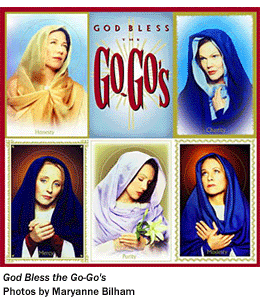
The Go-Go’s CD cover was a direct by-product of this as I had been working with Gina Schock for a few years and she expressed interest in having me work on their CD project. When I first submitted my book to the art director she had no idea of my personal work. She liked what she saw and then produced a rough layout of prayer cards based on the female Saints. I then showed her my Divine Eros imagery and was chosen to execute this project. The Catholic art critics were very upset with the concept art work as they felt it was a cheap shot at the Virgin Mary. Interestingly, we had been careful to remove all symbolism that could connect us directly with any particular religion. But with respect to the Go-Go’s project, I have always found synchronicity an important element of my life.
What do you mean by “synchronicity” and how has it been important in your life? Your work?
Maryanne: By synchronicity I’m referring to “meaningful coincidence” – experiences that we intuitively recognize as meaningful, though it would be difficult to explain in rational terms. Most of the more meaningful relationships in my life have been heralded by synchronistic events, often causing a complete change in the destiny of my life. I think it is important to stay open to these experiences.
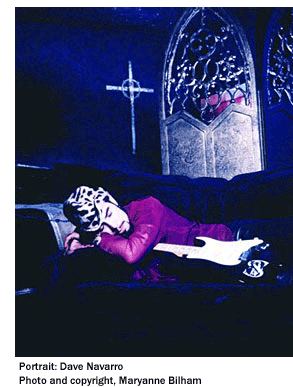
Certain projects and assignments, such as God Bless the Go-Go’s (presenting each Go-Go in the style of a prayer card), represent a strong synchronicity. As I mentioned, I was already involved in the personal project Divine Eros, a visual biography of female mystics, when I was asked to quote on the Go-Go’s project – something the art director had no prior knowledge of. Sometimes there’s an interconnectedness between people in the music industry.
Your images often point to the non-visual – to the spiritual and conceptual. Is this something you consciously intend to achieve with an image or does it infuse the process subconsciously?
Maryanne: Music and photography are both creative media that constantly explore and project our intuitive abilities. Often, the musician will present themself with a strong manifestation of light or dark in their music. These motifs may appear visually as ethereal and angelic or as foreboding and demonic forces. I find this an interesting visual metaphor to utilize in constructing their imagery, which can also help bring out an emotional quality in the artist.
You worked recently with John 5. What did that project entail – what was the purpose, how did it come about, how was it executed?
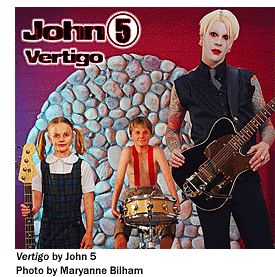
Maryanne: I was very excited to work with John, one, because he is such an amazing musician and, secondly, because he has such a strong visual. He had this idea to create a rehearsal room environment with a strange twist, So we brought in the grandparents of the children who were shot separately for the photo rendering. It was a great shoot for me as it flowed very easily – we were both on the same page in the end interpretation. Initially, we met to discuss the images we needed to create, then I researched the locations backdrops, etc. We booked a day for all of this, and I arrived at the location with my team to execute it. I was hired by Mike Varney at Shrapnel to do this project. Both John and Mike liked the work I had done with Ogre.
I imagine the extent of your creative leeway varies from project to project, but in general, how do record label, advertising/design creatives, artist, and photographer work together toward a single creative goal?
Maryanne: Generally, you’re hired by an art director or artist because your imagery reflects some key elements that are in sync with the artist or the genre you are selling to. Style is also very important in the finished rendition. And personality goes along way in making an artist and client feel at ease and able to collaborate on an image that fulfills their goals.
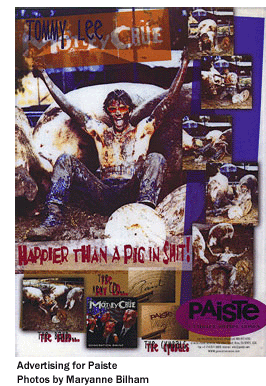
How is a consensus reached when creative ideas differ between marketing and artistic self-expression?
Maryanne: As a professional, I like to respect my clients’ input and direction as they are hiring me for this reason. I look to my personal projects for that total artistic expression and freedom.
In what ways has the digital revolution affected you? Do you shoot digital? Continue to shoot film?
Maryanne: I look at digital as another type of film stock, for certain situations it can deliver things film is unable to. I prefer it in shooting live and love the ability to playback immediately for confirmation of exposure and lighting. Film, however, still has a lot of characteristics digital is lacking, the subtlety of black and white photography being one of them.
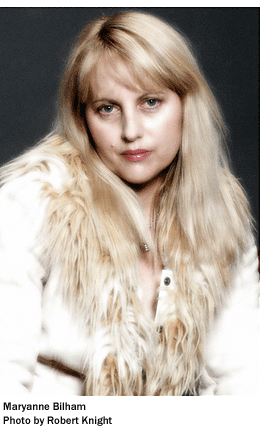
How do you approach a situation where an artist’s CD presents a number of seemingly unrelated styles that have to be merged into a single cover shot?
Maryanne: Fortunately, on most of the CD projects I work on I am creating all of the imagery. Where this happens, a good designer is crucial to pull it all together and I may have all the imagery converted to one medium, be it B/W, sepia, or blue tone – something that immediately creates a unity among the imagery.
Travel appears to be an important part of your life also, correct?
Maryanne: Travel, yes – my main reason for leaving NZ. I especially love photographing the religious iconography of different cultures, ancient ruins, and mythical sites. Where possible I like to incorporate this into my music imagery. I have traveled many times to Italy, France, Spain, Ireland, England, Scotland, northern Europe, most of Asia, Canada, Peru (Machu Picchu), Caribbean, Tahiti, Mexico, Hawaii, and Australia.
Other interests or cherished pursuits?
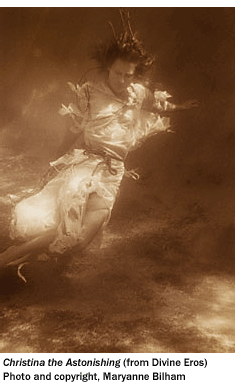
Maryanne: Investigating the mystery phenomena – this is where Robert and I have a common bond. Love hiking, especially the Sierras, cycling, water skiing, boating, and scuba diving. It was Christina the Astonishing, an image created underwater, that first sparked my interest in getting certified. My friend, Pam Moore, who was the promoter of the Crossroads event last summer in Dallas and works for Octagon, was the model for this image. She is also a diver. It was shot in a swimming pool. There is no photo manipulation involved. The image won second place in the international photography awards last year and is part of the Divine Eros exhibit and based on the story of Christina Mirabalis a 13th-century female Saint who lived for days at a time in the river Meuse.
Related Link
Maryanne Billham
More articles by Tom Watson